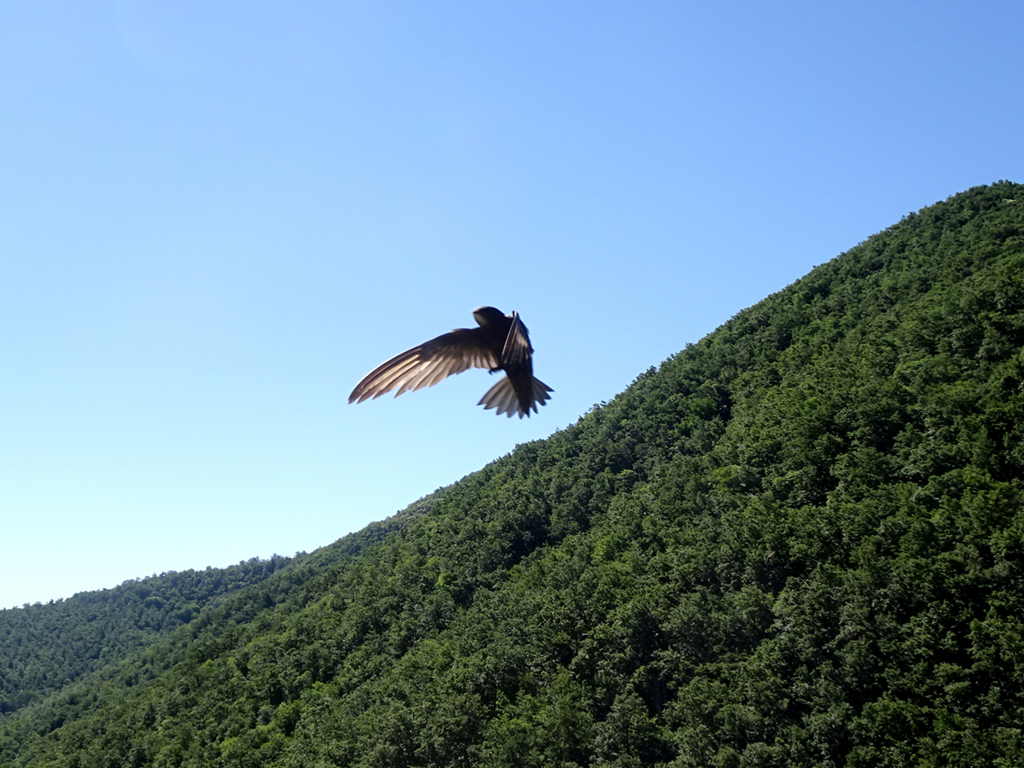I can (and do!) spend hours, watching the swifts. We probably have about
30 nesting in the walls of the house. When I sit out on the balcony they fly by
within touching distance. I felt curious about these wonderful
birds who give me such immense pleasure and did some research. I’m now even more impressed.
Some interesting facts about swifts:
Except when nesting, swifts spend their lives in the air.
They drink, feed, often mate and even sleep on the wing.
It’s estimated they can fly more than 500 miles each day.
A tagged swift is recorded to have taken just 5 days to do a 5,000 mile
journey from West Africa to the UK.
They eat airborne invertebrates and drink by catching raindrops or by
skimming surface water.
They are one of the fastest birds on the planet, able to fly at the speed
of 169 km/h (105 miles p/h).
They can fly at a height of 10.000 feet (small jets fly at this
altitude).
They are able to fly at night and can adjust speed and direction using
only half of the brain (while the other half sleeps).
Their principle predators are falcons, hobbies, kestrels and few species
of owls.
A female will typically lay 1 to 6 white eggs (usually 2 to 3) that
hatch after an incubation period of 19 to 23 days.
Unlike other species of birds, new born swifts are able to decrease body
temperature and slow down metabolism to survive scarcity of food.
When food becomes available, youngsters grow and develop as quickly as
possible.
Both parents take care of the chicks.
They bring balls of food (called boluses) composed of 300 to 1000
insects.
At the age of 6 to 10 weeks, a chick will leave its nest.
Swifts are faithful to a nesting site and will often return year after
year to the same place.
Some colonies are very old and have been used by successive swift generations
for tens if not, hundreds of years.
Over 35,000 swifts have been known to share the same colony.
A swift usually survives around 5.5 years in the wild but can have a
lifespan of 10 to 20 years.
The oldest known swift reached 30 years of age.











